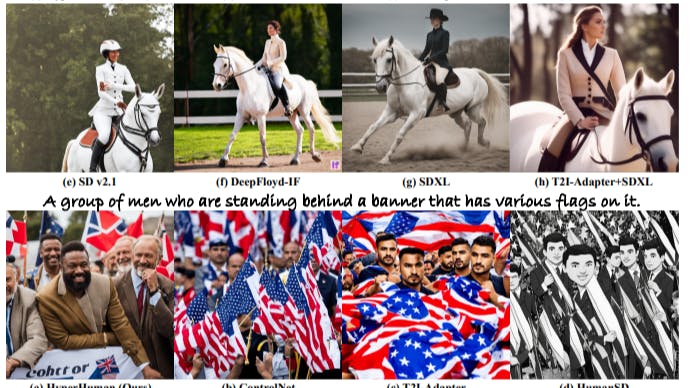Immigration is a recurring topic of debate. We observe cases in which there is controversy (the United States) and others in which it is necessary to save demographics (Japan or South Korea). However, practically all towns have had the need to move at some point. And, precisely, the United States has been the destination for many of them.
Immigration to North America has been a constant for centuries, and one of the groups that went in search of fortune to the California of the gold rush was… the Basques.
gold rush. We have to travel to Sierra Nevada. Not the one in Andalusia, but the one in California. It is a mountain range that is located in California, but also extends into the state of Nevada. The famous Sequoia National Park, Kings Canyon National Park and the famous Yosemite National Park (whose website tells this story) are located in the Sierra Nevada.
And something that was also in the mountain range was gold. A lot of gold, so much so that it was one of the most important points of the so-called ‘Gold Rush’ between 1948 and 1855.
And from the wool. When the miners spread the word that there was gold, the population of California grew like wildfire and, apart from the gold industry itself, livestock farming was crucial. Not only did the fortune seekers have to be fed, but also warm clothing had to be made. However, in 1963 a drought occurred that decimated the livestock industry, making meat scarce.
Solutions had to be found, and thus a new industry was born: sheep herding. This was common in other territories, but not so much in the United States. Sheep were more tolerant of these conditions and could also be led to more prosperous places to graze and obtain supplies. It was perfect: they were more resistant, they could provide meat if needed and wool for both the miners and the Civil War soldiers.


Yosemite can’t be easy in winter. In summer… neither
Basque shepherds in Yosemite. It was a new industry and they needed workers, and there was a group with pedigree in this task. The Basques come into play, who emigrated to the United States in the 19th century in search of opportunities. Many traveled from the Basque Country, but there were also those who traveled from the Argentine Pampas. They were not the only ones, since there were also Portuguese, Chileans, Mexicans and Scots with experience in herding who came to the United States.
The majority of Basque shepherds in California came from Iparralde and the difference with other groups is that the Basques built an almost endogamous industry. It was not necessary to know the language to work (you could start with something very basic), but something interesting is that the Basque immigrants themselves were the businessmen, owners of the sheep and used to employ shepherds who were friends or relatives. This forged a strong Basque community in the Californian mountains.

Houses of culture. Shepherds could tend flocks of thousands of sheep and lambs at a time. They stayed in pensions in which the Basques were the owners, forming centers of culture and community, and something interesting is that the money was used for two objectives: to send it to the family in Europe and to be able to return in the future in a better economic situation. or, on the contrary, use it to establish themselves in the United States.
If this was the case, the shepherds (who were usually young, single men) dedicated themselves to investing their earnings in buying more sheep so they could have their own flock and, in this way, be more self-sufficient.
It wasn’t simple. Now, it was not an easy lifestyle. Not only was the climate challenging, but also the terrain and dangers such as wild animals. They were away from home for months at a time, especially in the summer, so if they got sick or anything happened to them, they were unlikely to receive medical attention. They were also discovering the terrain and the best routes in real time, so it was entirely up to them not to get into very complicated places. But the worst was the loneliness.
So many months without human contact caused these shepherds to develop mental crises, something that the shepherds themselves baptized with the term ‘sabeche’ or ‘sheeped’. When the herding season ended, they took refuge in those cultural centers and boarding houses run by other Basques to recover. And they were not immune to xenophobia either. Because they did not have the opportunity to learn English, they took refuge in their communities, which caused strong rejection from the locals.


A trail junction marker
Everything has an end. During those early years, there was no legislation and pastors could basically do whatever they wanted. It is estimated that tens of thousands of sheep were grazed in the Tuolumne Meadows area, but as is often the case, the situation changed when Yosemite became a national park and other areas also began to be legally protected as nature reserves.
This made grazing illegal in a territory of more than 1,500 square miles, including Toulumne Meadows, so the herders were persecuted. And there were no police officers or forest rangers in charge—there wasn’t any because all of this had just been created—but the army.


These arboglyphs with initials and dates were common. This dates back to 1885.
Challenging the army. The military carried out a cleanup of shepherds in the park, but although they were pursuing the Basques, they had an advantage: experience in the terrain and knowledge of it. It is what allowed them to avoid the army for years (which, however, was often successful in driving out the shepherds), but in 1906 the reports of sheep entering Yosemite decreased and, with the Taylor Grazing Law of 1934, put an end to this activity on public lands.
Livestock farming began to make its way again, emerging as an important industry thanks both to the changing conditions of the country and, above all, to the fact that laws were formulated that fostered such change.


It is not very clear what this carving represents, but there were several like it.
Arboglifosthe Basque legacy in California. However, there are still Basque shepherds who, as a vocation, carry out this centuries-old activity in the American West. And beyond this history, what we are left with is an indelible cultural legacy: the arboglyphs. Since the shepherds spent so much time alone, boredom led them to carve trees. This became an art, but also a kind of mail for other pastors.
Routes, proper names, dates, jokes, explicit content were carved (this sounds familiar to us, Pompeii) and, above all, they were helpful when the army came into play. In this way, the shepherds warned each other, warning of the presence of the army.
Legacy. Now, marking a tree in one of these parks is illegal, punishable by a fine and prison, but the remaining ones are a reminder of hard, solitary and necessary work that did not have enough recognition at the time in which it was developed, but that helped the North American Basques to cultivate that reputation as tough guys who were not afraid to face nature.
Images | National Park Service, Heiko von Rüssendorff, Darwinek
In WorldOfSoftware | In the US there is a city “colonized” by the Basques. And it has its own ikastola, fronton and ikurriñas on the street










